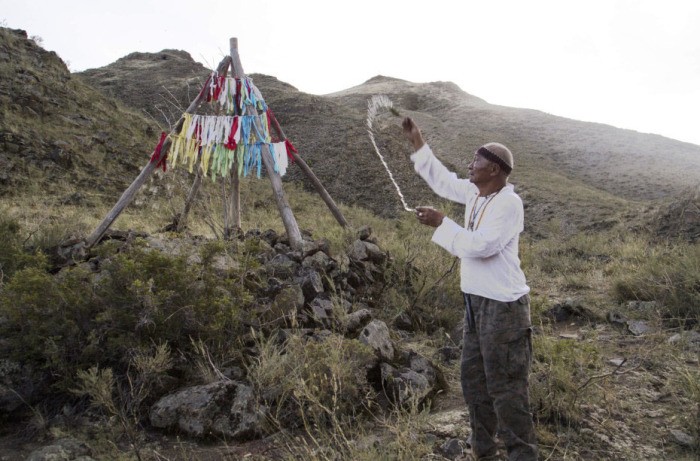The Influence of Kazakh National Traditions on Esoteric Beliefs and Magic

Kazakh national traditions, deeply rooted in the nomadic lifestyle of the steppe, have profoundly shaped the spiritual and esoteric beliefs of its people. These traditions, interwoven with animism, shamanism, and Islamic mysticism, create a unique tapestry of magical practices and cosmological views that continue to influence modern Kazakh spirituality. This article explores how Kazakh cultural heritage informs esoteric beliefs, emphasizing the mystical and magical elements that permeate the collective consciousness.
The Nomadic Soul and Animistic Foundations
The Kazakh worldview is inseparable from the vast steppes, where the nomadic lifestyle fostered a profound connection with nature. Animism, the belief that all natural elements—mountains, rivers, and skies—possess a spiritual essence, forms the bedrock of Kazakh esoteric traditions. The spirits of the land, known as aruaq, are revered as guardians and ancestors who guide the living. These spirits are believed to influence fate, health, and prosperity, and their presence is invoked through rituals and offerings.
For example, the practice of tying colorful ribbons to sacred trees or springs, often located near ancient burial sites, is a common way to honor these spirits. This act is imbued with magical intent, believed to grant blessings or protection. Such rituals reflect a deep-seated belief in the interconnectedness of the physical and spiritual worlds, a hallmark of Kazakh esotericism.
Shamanism and the Role of the Baksy
At the heart of Kazakh magical traditions lies the baksy, a shaman-like figure who serves as a mediator between the human and spirit realms. The baksy is not merely a healer but a conduit for divine and ancestral wisdom, capable of divination, exorcism, and spiritual guidance. Their practices, often accompanied by the rhythmic beats of the kobyz (a traditional stringed instrument), involve entering trance states to commune with spirits.
The baksy’s role is steeped in esoteric significance. Their ability to navigate the unseen realms aligns with Kazakh beliefs in the tengri (sky god) and the cyclical nature of existence. Even today, in rural areas, people consult baksy for matters of love, illness, or misfortune, viewing their interventions as a blend of magic and divine will. This enduring trust underscores the persistence of shamanic traditions in shaping Kazakh spiritual life.
Islamic Mysticism and Sufi Influences
With the arrival of Islam in the Kazakh steppes, esoteric beliefs evolved to incorporate Sufi mysticism, which resonated with the nomadic emphasis on inner spirituality. Sufi practices, such as zikr (ritual chanting) and meditative contemplation, blended seamlessly with pre-Islamic rituals, creating a syncretic spiritual framework. The veneration of saints and their mausoleums, such as the tomb of Khoja Ahmed Yasawi, became focal points for esoteric practices, where pilgrims seek miracles and spiritual enlightenment.
Sufi-inspired beliefs in the hidden meanings of the universe also influenced Kazakh magical practices. Amulets inscribed with Quranic verses, known as tumars, are worn to ward off evil spirits or attract good fortune. These talismans reflect a belief in the power of sacred words to manipulate spiritual energies, a concept that bridges Islamic mysticism with Kazakh folk magic.
The Esoteric Power of Oral Traditions
Kazakh oral traditions, including epic poetry and folklore, are rich with esoteric symbolism. The epic Kobylandy Batyr, for instance, narrates the hero’s journey through trials that mirror shamanic initiations, symbolizing the soul’s quest for enlightenment. These stories often feature magical creatures, such as peri (fairies) or jinn, which embody the unseen forces that govern human destiny.
Proverbs and blessings, passed down through generations, also carry magical weight. For example, the phrase “Batamen bas, duamen qor” (Begin with a blessing, protect with a prayer) reflects the belief that words can shape reality. Elders often perform bata (blessings) during significant life events, such as weddings or births, to invoke divine protection and prosperity. This practice underscores the esoteric belief in the transformative power of intention and speech.
Modern Manifestations of Kazakh Esotericism
In contemporary Kazakhstan, traditional beliefs coexist with modern influences, creating a dynamic esoteric landscape. Urban youth, while embracing global spiritual trends like astrology and tarot, often reinterpret Kazakh traditions through a mystical lens. For instance, the use of dombra music in meditative practices or the revival of kobyz performances in spiritual gatherings highlights the enduring allure of ancestral magic.
Moreover, the resurgence of interest in Tengrism, the ancient Turkic religion centered on the sky god, has sparked a renewed fascination with Kazakh esoteric roots. Modern practitioners blend Tengrist principles with New Age spirituality, viewing the steppe as a sacred space for connecting with cosmic energies.
Conclusion
Kazakh national traditions, with their blend of animism, shamanism, and Islamic mysticism, continue to shape the esoteric beliefs and magical practices of its people. From the rituals of the baksy to the sacred power of oral traditions, these cultural elements reflect a worldview where the spiritual and material are inseparable. As Kazakhstan navigates modernity, its esoteric heritage remains a vibrant force, guiding the spiritual imagination and offering a mystical lens through which to understand the universe.